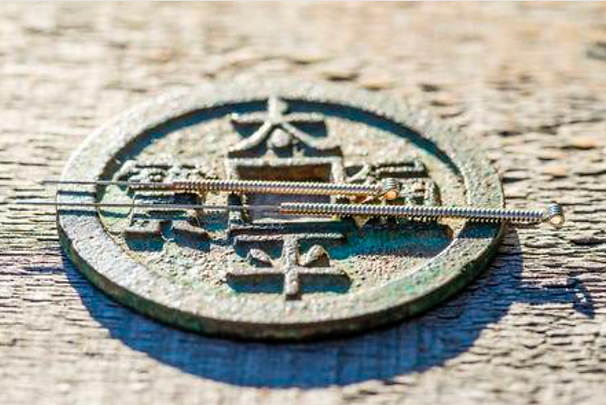Tung's Points for Internal Medicine, & the Role of Visceral Fascia
Myofascial lines as discussed on the page Acupuncture and Fascia mirror the meridians and provide an anatomical basis for channel theory. This is essential for modern acupuncturist to understand as it lays out structural, functional, and scientific frameworks for the mechanical effects of acupunture.
Similarly, the internal - external connections and other meridian relationships such as occur with the horary cycle, and six divisions (tai yang, shao yang) can also be validated according to connective tissue anatomy.
A central aspect of meridian theory is the internal - external connections between the organs and meridians. By closely examining the visceral fascia we can come to better understand internal - external dynamics, meridian systems, and internal medicine.
Coronary ligament (LU)

Left triangular ligament to diaphragm (LU)
Right triangular ligament to diaphragm (LU)
Falciform ligament to
anterior abdominal
wall and SFL
Hepatic flexure to LI
LV - SI
Hepatoduodenal ligament
Visceral Fascial Connections Mirror Dr. Tan's 6 Systems
& Provide a Structural Foundation for the Balance Method
Dr. Tan's 6 Systems, Internal Medicine, & 3d Analysis
The visceral fascia are a 3D structural network that holds the organs in place and connects them to other anatomical systems.
In Dr. Richard Tan's systems the LV and LU are connected through system five and the horary cycle. Anatomically, the liver and lungs are connected via the diaphragm.
One of the symptoms of hepatitis is referred pain to the upper back, neck, and shoulders. It is known that this results from tension moving through the fascia, diaphragm and parietal pleura.

PC
-
GB - Lv - LU
- -
LI SI
In this image we can see the proximity of the liver with its system connections to the lungs and large intestine.
The system 5 connection between the liver and lungs occur at the diaphragm via the coronary ligament, left and right triangular ligament, and the parietal pleura.
The Four Horses (88.17 - 88.18) and Liver Pattern Symptoms

The Four Horses (88.17 - 88.19) on the SFL are indicated for various liver pattern symptoms such as costal pain, costochondritis, protruding eyes, hyperthyrodism, and breast disorders. Additionally, the Three Weights (77.05 - 77.07) are also located on the SFL and are indicated for numerous liver related symptoms.
The falciform ligament extends from the liver and attaches to the anterior abdominal wall and Superficial Front Line. This likely plays a role in why points on the SFL and stomach meridian can treat liver disorders.
While many of us use GB points to address liver patterns, the fascial plane model allows us to see the importance of using ST meridian and SFL points in treating liver patterns.
If you want better results when treating internal disorders, it is essential to understand the visceral fascial connections and how this relates to internal-external connections and other meridian relationships
Master Tung's Points for Internal Medicine
Here are some challenges when treating internal medical disorders:
-
Internal conditions are more difficult to treat and require more sessions
-
Pattern identification is often more difficult
-
Zang-fu patterns are appropriate for herbs but not so effective for point prescriptions
-
Determining the most effective points
-
Developing long term treatment strategies

Acupuncture Medical Research Reveals Many Insights
About Tung's Points and Needle Techniques
Scores of medical research have found that acupuncture is effective for many internal conditions. In my 304 level class in Master Tung's Points, Internal Medicine and Fascial Planes, I elucidate what research studies on acupuncture have discovered, and how this relates to Tung's points.
Learn how acupuncture and Tung's points can be used for treating:
-
Arthritis and Bone Disorders
-
Hypertension
-
Digestive Conditions
-
Urinary and Kidney Diseases
-
Gynecological Patterns
-
and much more.....

Acupuncture for urinary & Kidney Disorders
Medical research on acupuncture has found that urinary disorders respond well to acupuncture. In Tung's system the most commonly used points include:
-
Lower Three Emperors
-
88.09 - 88.11 - Passing Through the Kidney Three Needles
-
22.08 & 22.09
-
22.04, 22.05, LI 3

Doing a 3D analysis of the kidney and bladder fasciae, we find the above groups of points work on different visceral fasciae and fascial planes.

The Lower Three Emperors on the Deep Front Line (DFL) are able to influence the deep fascia of the pelvis and posterior renal fascia.

The points 88.09 - 88.11 are on the SFL and influence the UB fascia that connect to the abdominal wall.

22.08 and 22.09 are indicated for kidney and urinary disorders and likely influence the SBL and cranio-sacral dynamic.
Master Tung's Points for Internal Medicine
The course Master Tung's Points, Internal Medicine and Fascial Planes will give you many insights for treating internal disorders.
Complete your knowledge of how to use Master Tung's points for internal medicine.
-
Over 90 pages of professional pdf files with images
-
8 hours of audio recordings
-
Immediate access to files
-
Email support
-
12 NCCAOM PDA's

* Pre-requisite for this is the 201 or
202 course Master Tung's Points and Fascial Planes
Level 304 - Online Acupuncture Class

